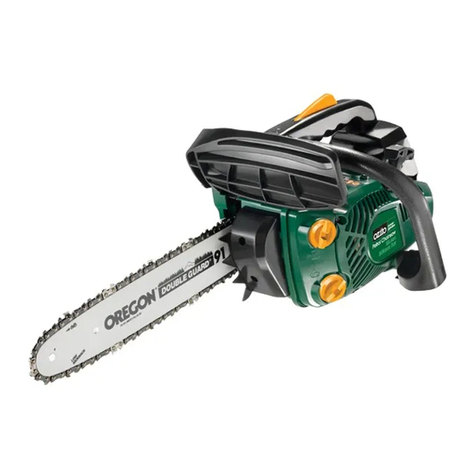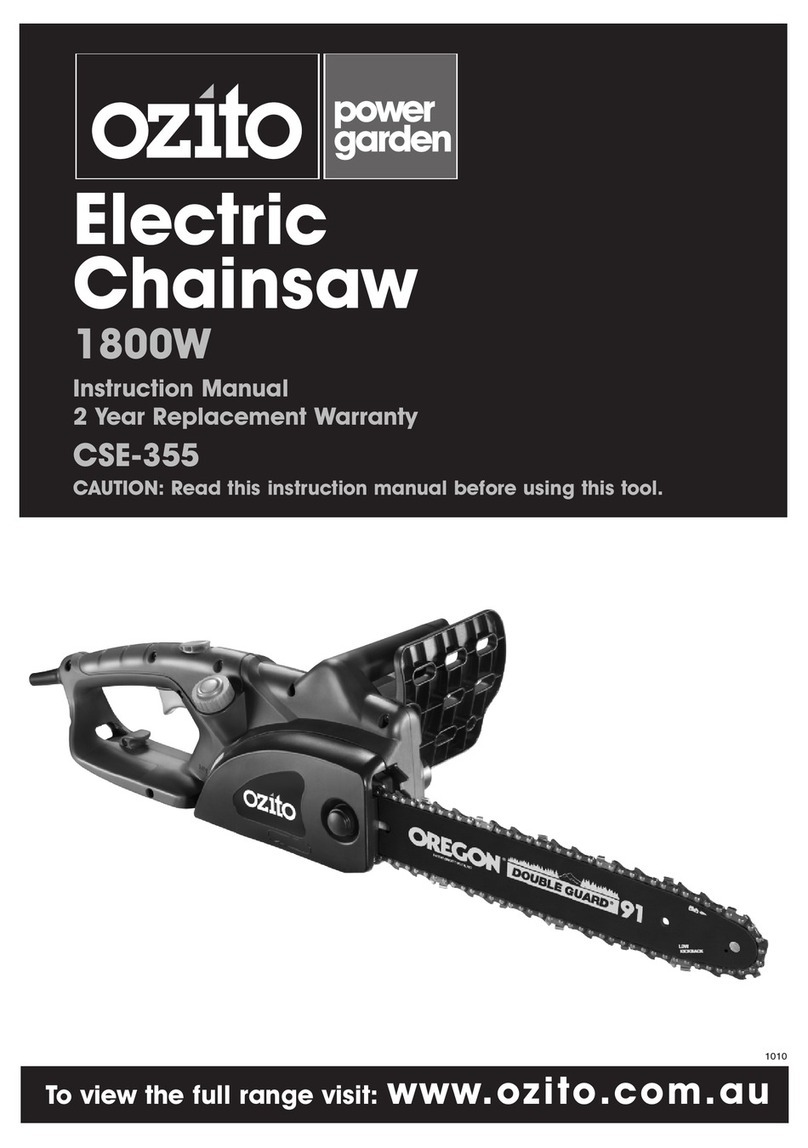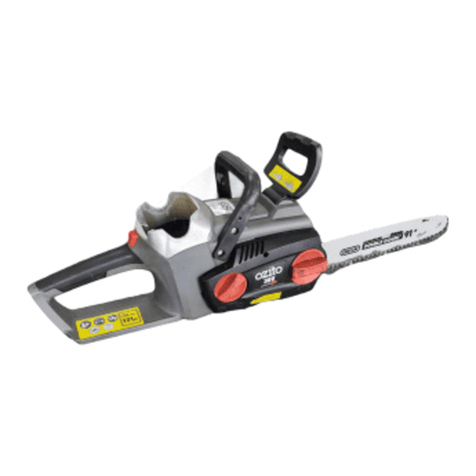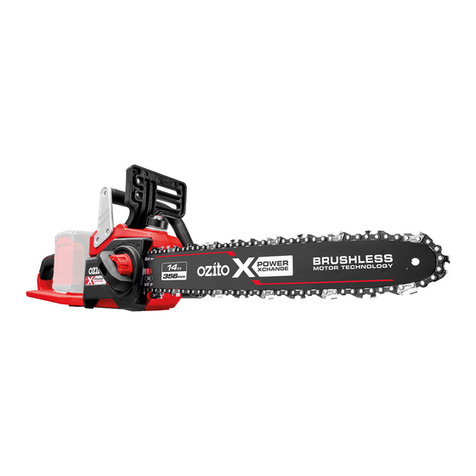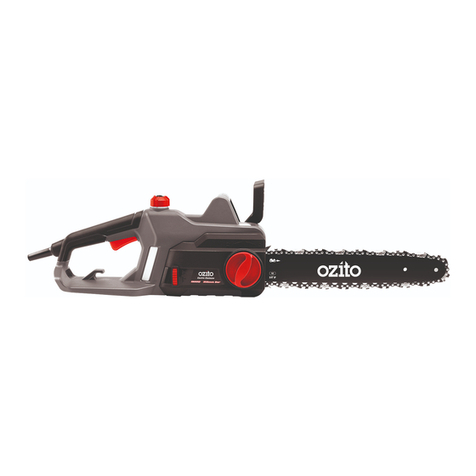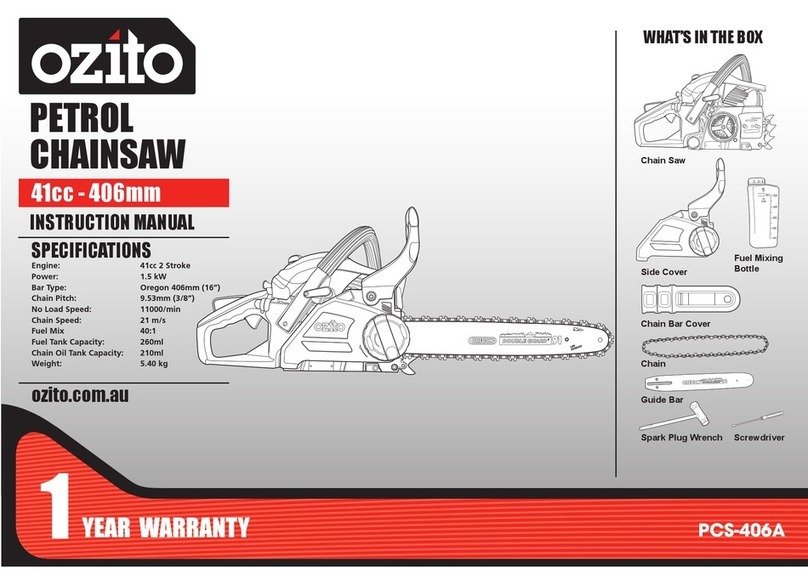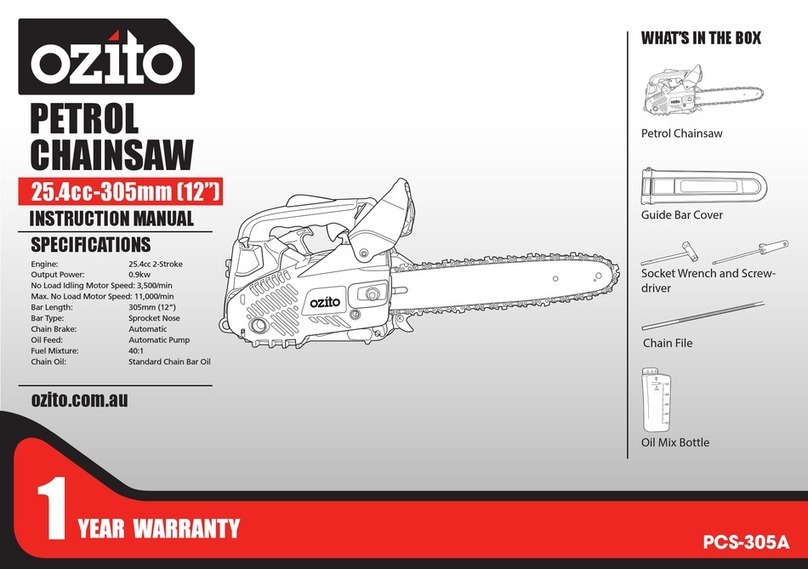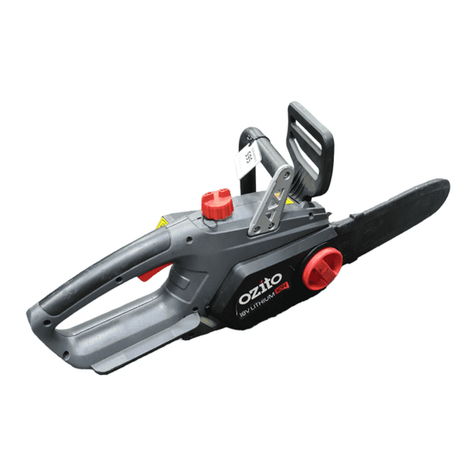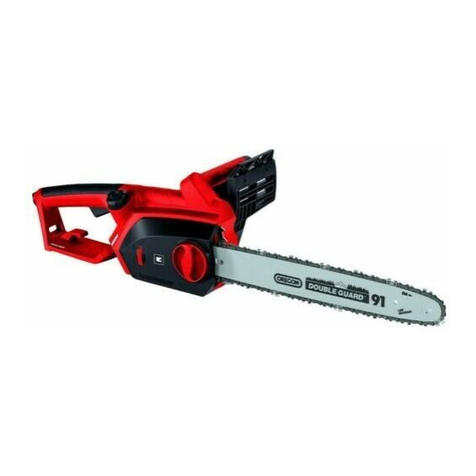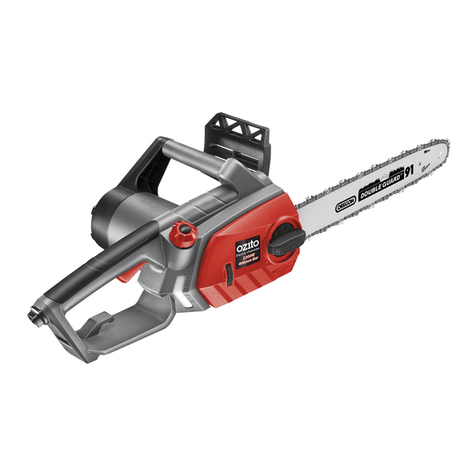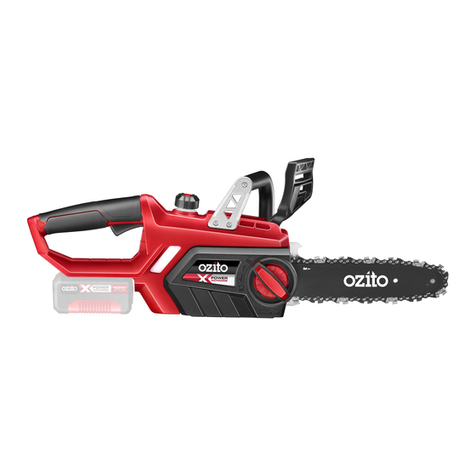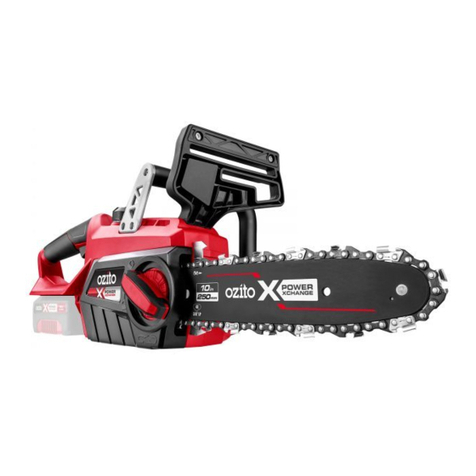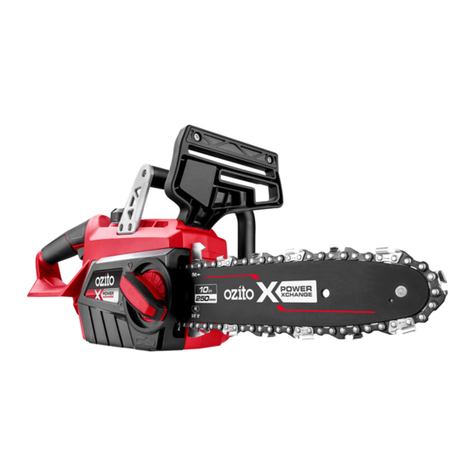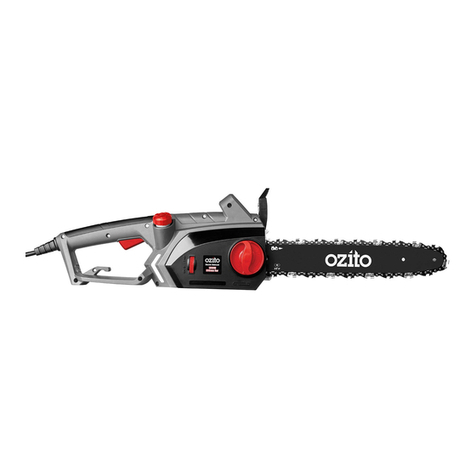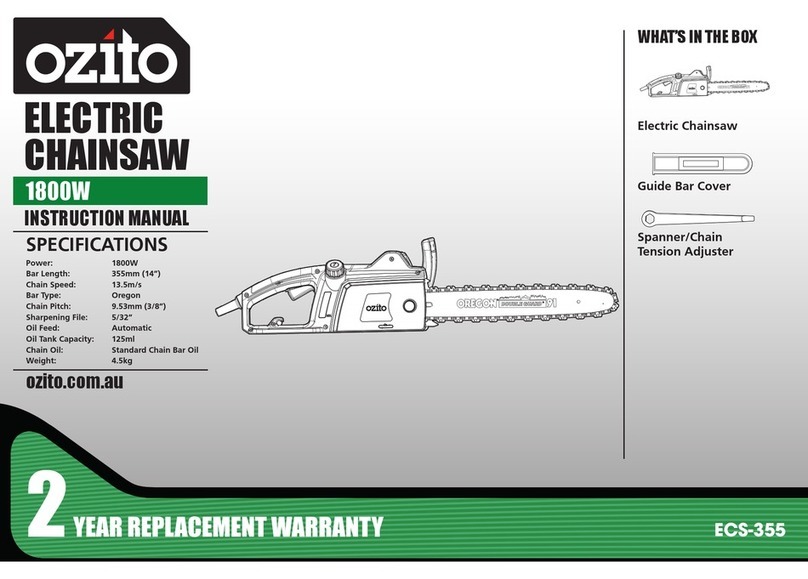9
Protect your tool. This chainsaw is NOT WEATHERPROOF and should not be exposed
to direct sunlight, high ambient temperatures, damp, wet or high humidity conditions
for prolonged periods of time.
Take care not to spill fuel. When refuelling the chainsaw ensure that the motor has
been switched off. Prevent the spilling of fuel as this may also ignite with the hot
motor. Never refuel whilst the engine running.
Be careful where you store the chainsaw. Store the tool in a dry area away from
flammable liquids.
Keep your distance. The chainsaw emits exhaust fumes. Ensure bystanders keep a
safe distance.
Operating instructions and instructions for common cutting tasks, including the use of
personal protection equipment are covered in this manual. This product has a need for
adequate training which is covered in this manual.
Do not operate this machine while tired, ill or under the influence of alcohol or other drugs.
Ensure that you mix 35 parts unleaded fuel to 1 part 2-stroke oil. If not, the engine will
overheat and cause damage to your chainsaw.
Never fill fuel tank indoors. Never fill fuel tank when engine is running or hot. Do not
smoke when filling fuel tank.
Kickback may occur when the tip of the guide bar touches an object, or when the
wood closes in and pinches the saw chain.
If the bar tip or point contacts, it can produce a rapid reverse reaction, kicking the
guide bar up and back towards the operator. This is known as rotational kickback.
Pinching the saw chain along the top of the guide bar may push the guide bar rapidly
back towards the operator. This is known as pinch kickback.
Either of these reactions can cause loss of control of the saw, resulting in serious
personal injury.
Do not rely exclusively on the safety devices built into your saw. Take the following
steps to help avoid accident or injury:
Reduce the element of surprise by understanding what causes kickback.
Keep a firm grip on the chainsaw using both hands, the right hand on the rear handle
and the left hand on the front handle when the motor is running. A firm grip will help
maintain control. Do not let go whilst the motor is running.
Make sure that the area of operation is free of obstructions. Do not let the point of the
guide bar contact a log, branch or any other object.
Use high speeds when cutting.
Do not overreach or cut above shoulder height.
Carefully follow the sharpening and maintenance instructions given in this manual.
Use only replacement bars and chains specified by the manufacturer.
KICKBACK SAFETY PRECAUTIONS
ADDITIONAL SAFETY INSTRUCTIONS FOR CHAINSAWS (cont.)
